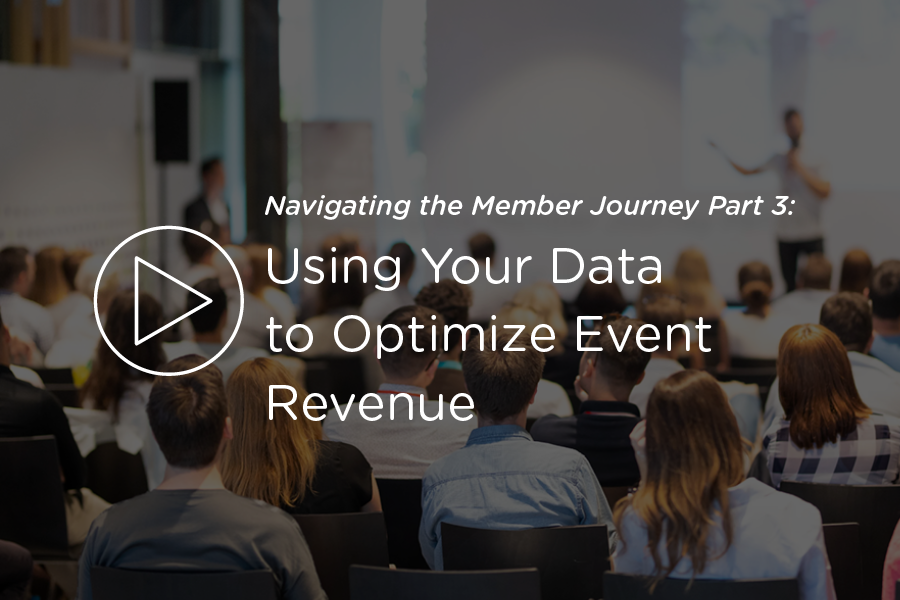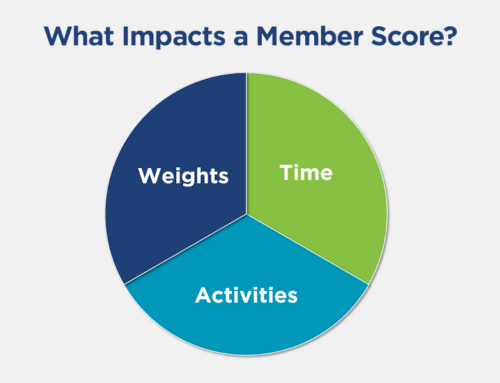In the association world, member engagement is always a top priority – but it’s not always a successful endeavor.
Most associations don’t have an easy way to measure member engagement across all their different systems and touch points. And even when measured, it can be tricky to know how to use engagement scores to improve member experience and operational results.
In this post, we’ll explore three strategies you can use to ensure you’re making the right moves for more meaningful member engagement. You’ll come away with specific examples from the team at the International Association of Exhibitions and Events (IAEE) that you can use to inform your own strategy.
Strategy 1: Innovate and Differentiate
What can your association do for members that others can’t? Look to create new and innovative products and services for an underserved population in your membership.
With this strategy, you’re not necessarily competing with current competitors, you’re finding space that’s less competitive or or maybe not competitive at all. When looking to innovate and differentiate, IAEE took the following steps:
Strategy 2: Double Down
With the Double Down strategy, you’re looking for products, services, and member segments that are really working well for your association. Once you’ve identified what’s working, you can reinvest, and promote those projects.
While the strategy is different from the Innovate and Differentiate strategy above, the steps are largely the same. Associations need to explore opportunities and options, segment their members, package content especially for those members, and then communicate the opportunity.
At IAEE, in looking at their data, the team noticed that a large segment of members with the CEM designation attended webinars. Looking to enhance engagement opportunities for those members, the team dove further into the data and saw that many of these members worked in sales. From there, IAEE produced a three-part series of webinars that focused on topics specific to them. Providing extra education opportunities for these members also opened up a new source of non-dues revenue for the association.
When it came to engaging their unengaged members, IAEE looked at what kinds of content their more engaged counterparts were consuming. They then promoted that content to unengaged members with similar profiles.
On the flip side of the Double Down strategy, IAEE was also able to identify activities and projects the team was spending time on that didn’t offer much return on investment. As a result they were able to sunset three underperforming newsletters that required significant resources for the team.
Strategy 3: Ask and Observe
With the Ask and Observe strategy, your team will look to both explicit data and implicit insights, validate those findings and then use them to continuously improve your programs and engagement.
Explicit data is the information you ask for from members in surveys, while implicit data is something you’re able to infer based on preferences and interests. Both are important to consider because often, what people say and what they do won’t match up.
For IAEE, it’s important to keep a pulse on what members are asking and saying about the association’s products and services.
The team likes to take advantage of every opportunity to ask members questions, from polls, to website forms, and longer annual surveys conducted through Survey Monkey. In order to track trends year-over-year, IAEE will repeat many of the same questions, adding in three or four additional questions about programs or services the team is testing.
When it comes to observing data, IAEE likes to focus on metrics including product and publication downloads, event registrations, email interaction, social media engagement, volunteer signups, and donations.
One opportunity IAEE uses for observation is a series of small group discussions called Community Buzz Hours. These virtual sessions allow members to gain knowledge from other member experiences and collaborate to find common solutions. Each session has a themed topic and some sessions may include a 15-20-minute presentation.
IAEE is able to use these sessions to mine for common problems members are facing, that the association can help them solve and identify areas where the association can develop new programs and products.
Associations want to ask and observe, and the answers collected should help to validate each other.
Member engagement scoring and modeling removes the guesswork
Engagement is an exchange of value between your member and your association. The trick is to find the sweet spot where members feel they’re getting value from joining and your association is getting value from those relationships.
When you’re looking to identify trends and areas to improve member engagement at your association, it can feel overwhelming. All the different types of data and the individual data points can make it feel like you’re searching for a needle in a haystack.
What if, instead of a haystack, you were able to visualize member engagement as pieces of a pie? In that pie, the sections represent activities and the size of the section corresponds to their importance. To build your own engagement model start simple: take the activities your members participate in and products they use, and assign a weight to them. Watch this on-demand webinar for a quick walk through how to do this (starts around 46 min mark).
Engagement scoring can simplify the process even further as engagement with activities and different products can add up to a certain engagement score specific to each member. Using engagement scores you’re able to:
- See trends over time and how they have changed
- Define member personas (which members like which things) based on engagement activities
- Find potential event attendees, speakers, donors, volunteers and more
- Build a member journey from Interested (just learning) to Connected (donor or board member)
Not surprisingly, one of the biggest opportunities to meaningfully engage members for most associations is during an annual conference.
To learn more about engagement for events, watch our on-demand webinar – Using Your Data to Optimize Event Revenue.
Want to learn more about how we help associations successfully leverage data to grow and engage with their membership? Contact us at any time to speak with one of our data-loving experts.





